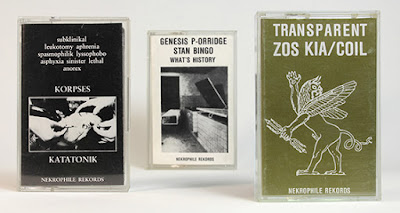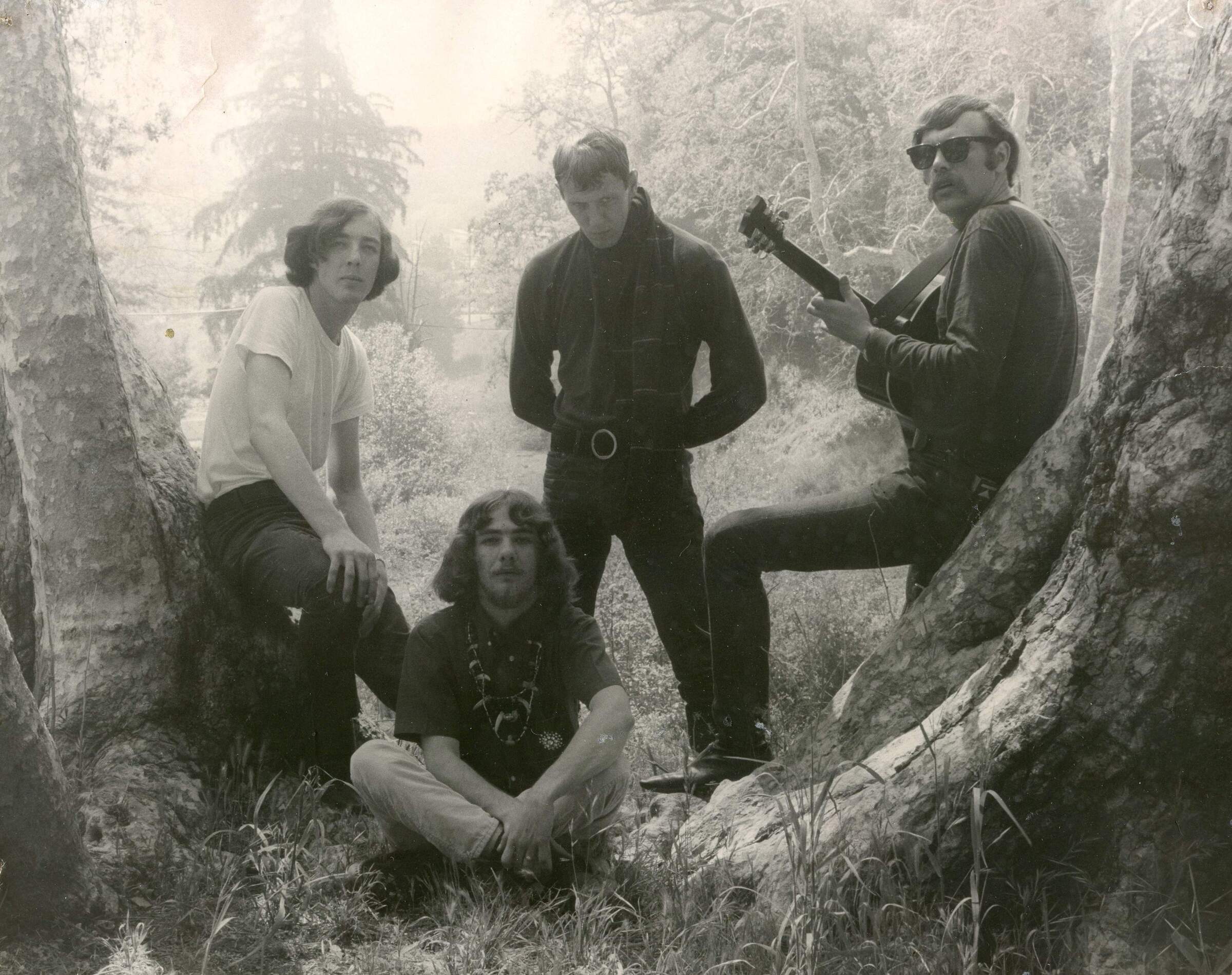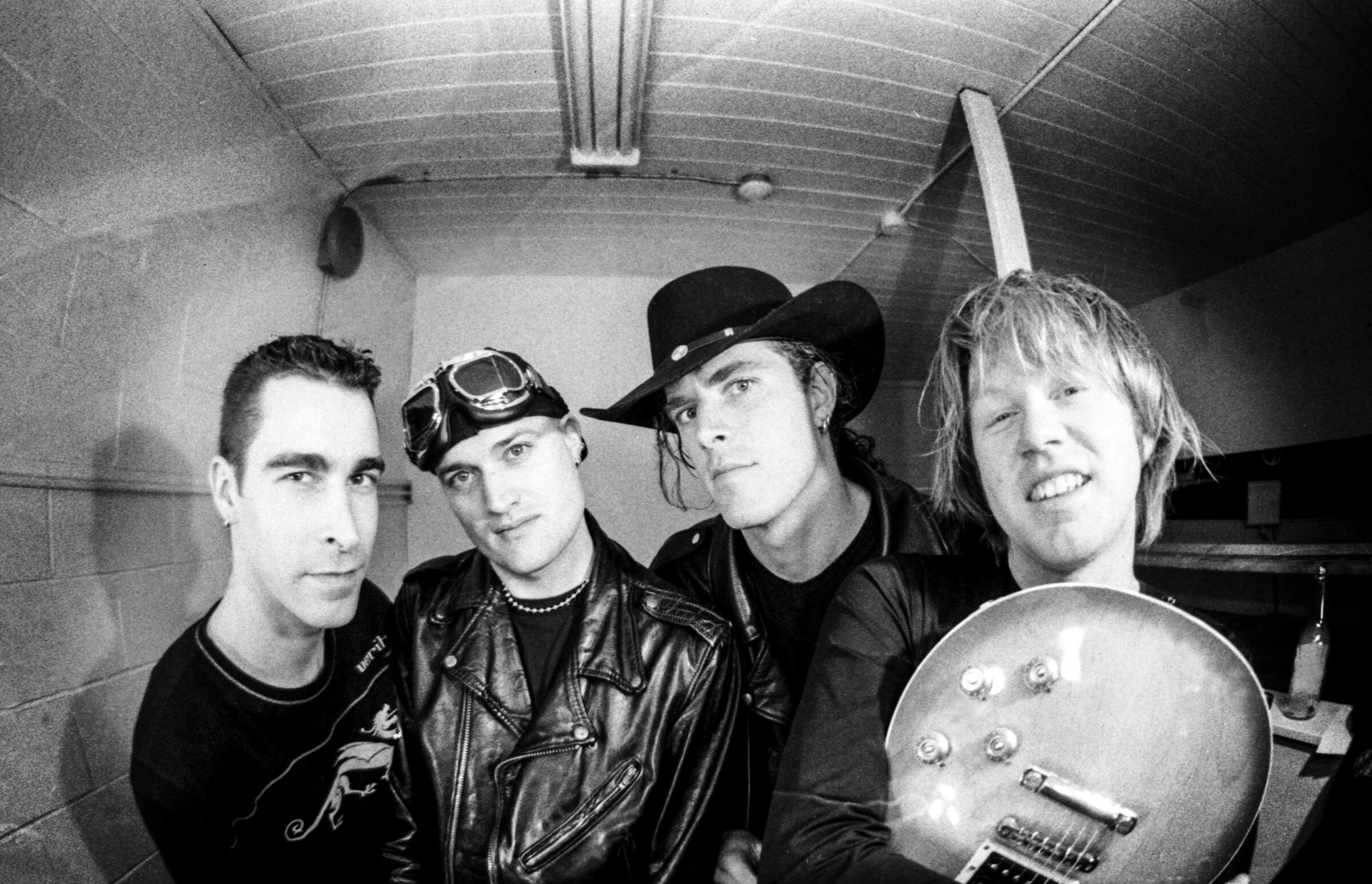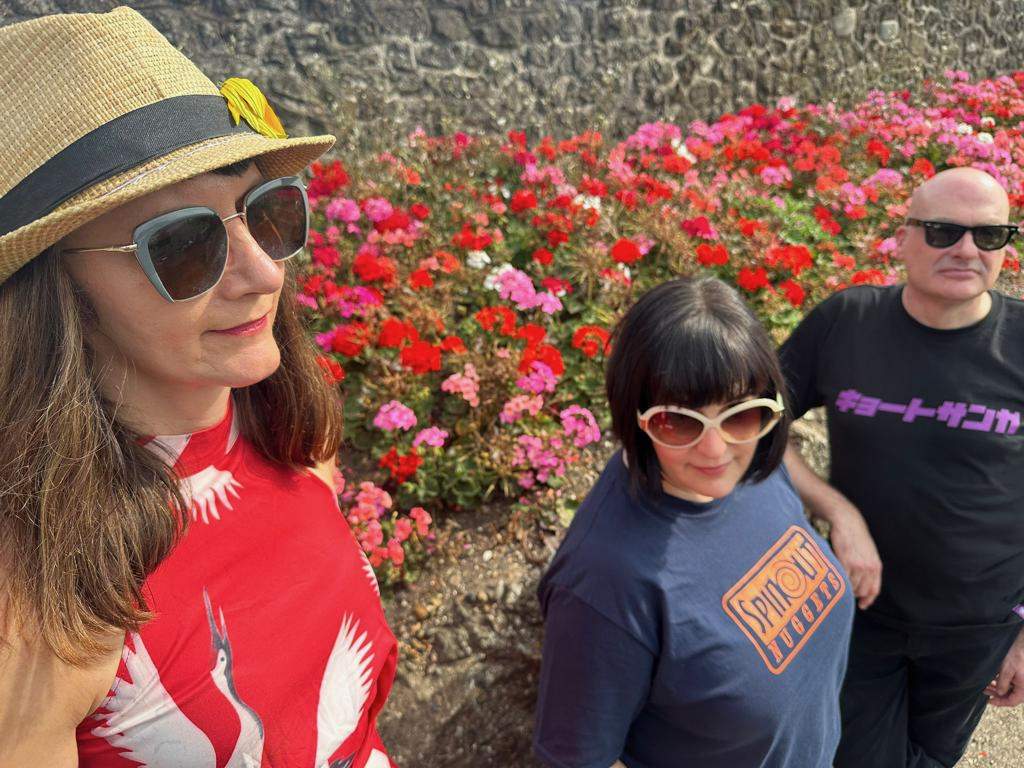Zero Kama interview
Zero Kama is an experimental music project founded in 1983. It was formed by Michael (Zoe) DeWitt. The first release of Zero Kama was the title V.V.V.V.V., recorded for the Nekrophile Rekords cassette compilation The Beast 666. In 1984 followed the cassette release of the album The Secret Eye of L.A.Y.L.A.H., which is commonly regarded as one of the key albums of the industrial-subgenre ‘ritual’. DeWitt had a project before called Korpses Katatonik, from which Zero Kama was initiated. Following an invitation of the NL-Centrum Amsterdam, Zero Kama played two live concerts in the Netherlands in 1985, and – after two more releases on the Nekrophile compilation The Archangels of Sex Rule the Destruction of the Regime – completely withdrew from the public. While The Secret Eye of L.A.Y.L.A.H. was recorded solely by Zoe DeWitt, the later live performances were realised with befriended musicians such as Didi Neidhart and Muki Pakesch, whom Zoe DeWitt knew from the Austrian music underground of the 1980s. There were rumours that DeWitt used human bones for instruments. Let’s find out more in following conversation with DeWitt who is still very active in art and might start working on a music project in the near future.
Where were you born? What interest did you have as a teenager?
I was born in Vienna, Austria, in 1962 as the son of a sculptor. During my early childhood my father took care of me most of the time as my mother was working in an office, while he finished his study of fine arts. It was the same art academy where I now am studying, the Academy of Fine Arts Vienna. So art was always a factor in my childhood, yet the relationship to my father turned out to be somehow problematic, as he was an aggressive and hysterical person. As a consequence I had also a problem with accepting myself as an artist, which finally happened much later in my life. When I was a teenager I was mainly interested in eastern mysticism, yoga and meditation. This alternated with periods of drug experiences, so somehow I was interested in switching my consciousness on and off at will. Actually I lived in my youth in the countryside, in a small sleepy city which had not much to offer. Perhaps that’s the reason why I decided to go more on journeys into inner or remote realms.
How old were you when you started your first project Korpses Katatonik? What influenced you the most to record this very dark industrial album?
I was twenty and at the same time started to study electro acoustic music at the University of Music and Performing Arts in Vienna where we learned more or less how to make tape loops. The main influence of the album was obviously SPK, which can be seen both in the sound as well as in the mimicking of their name in the title of the album as all the words in it had the initial letters S.L.A. (this by the way was a reference to the Symbionese Liberation Army which kidnapped Patty Hearst in the early 1970s). So even if the atmosphere of the recording was very dark, not everything was meant totally serious – we also had some kind of fun when using such word games and sinister images. But of course also TG and Cabaret Voltaire had a big impact on me. I recorded the album at home, using a Korg MS20, a SQ10 sequencer and a guitar with one or two effect pedals. The lyrics were taken from poetry written by patients of the mental hospital in Maria Gugging close to Vienna. Many of those patients became also well known for their artistic work.
1980s was a time where ambient and industrial music gradually reach wider audience and various of different artists appeared from underground.
Well, my own turn from heavy electronic and industrial sounds to a more calm and acoustic approach came when I developed from my electronic project Korpses Katatonik towards the ritual project Zero Kama, which was entirely based on acoustic instruments. It was a time when also SPK and Psychic TV experimented with the idea of ritual music, which seemed to be connected with an increasing interest in occultism at that time. When I started with Zero Kama, John Balance started with his band Coil and we shared a lot of ideas regarding what we intended to do with our music, besides that also our main sources of inspiration were the same.
You started Nekrophile Rekords to promote your music. What’s the story behind its name?
Well, one could say that Industrial music and culture was obsessed by the negative, by dark and sinister images and connotations, and to enter those realms which were commonly avoided or suppressed, yet for me this was also a kind of transformative process. To enter and express the darkness means learning to accept it, getting into a better relationship with it and thus making the energy which is trapped therein available for new purposes. This is somehow also reflected in the name Nekrophile Rekords, the love for corpses. The same transformative process was also expressed in Zero Kama’s album ‘The Secret Eye of L.A.Y.L.A.H.’, in which I made music from human remains and thus turned the cruelty of death into a kind of transcendental beauty.
Let’s get into details about ‘The Secret Eye of L.A.Y.L.A.H.’ Where was it record it?
Laylah is an angel of night and this was supposed to be recorded in his temple.
The album was recorded in my apartment which I named ‘The Secret Temple of L.A.Y.L.A.H.’ on the cover of the album. Laylah is in fact not an angel of night, but simply means night in Arabic, and it is also a female forename. The important point regarding the concept of the record was that in Hebrew cabala the numerical value of the name Laylah was 77, the same as of the word Oz, which means a he-goat. So this somehow was a hint that night and death on the one hand, and unrestrained sexual force of creation were two forces which seemed to balance and complement each other in the whole evolution of the universe. All things must pass, yet out of this decay the power of new creation arises.
There is a rumour that all instruments were made exclusively from human bones and skulls by the hand of Zero Kama? It this true?
Yes it’s true. On the photo which was printed on the album cover (showing an altar with the Zero Kama logo) you can see most of the instruments. There were some more, like a xylophone of thigh bones and some rattles made out of fingers and skull caps… This photo is almost the only picture of the instruments as I did not keep them except of a thigh bone trumpet and a skull drum. And there is one picture from our concerts in the Netherlands where you can see me playing one bone instrument. (It was taken by Claude Crommelin and I saw it for the first time only one or two years ago…)
You’re obviously very interested in occultism. What are some inspirational authors?
Well, the main inspiration in occultism and art was for me Austin Osman Spare, whose Collected Works I translated to German around 1988. His magic opened doors to me which enabled me to make experiences that should change my world view completely. These experiences – which were partly magical and partly mystical (as for example past life memories) finally led away from my interest in occultism towards the study of philosophy as there was on one hand the urge to express my experiences, but on the other hand a huge difference of these experiences to what was commonly regarded as possible or reasonable. In order to create my own theory on reality I therefore had to learn an understandable language and get to know what others had already said about that subject.
Your next project The Book Of The Law only saw one track release. What happened?
Well, I simply realized that with ‘The Secret Eye of L.A.Y.L.A.H.’ I had made something unique which could not be topped. And it was also so unique because it was a solo project which I made without the help of anybody else. All later attempts to start a musical project were collaborations and lacked this strange and unique sublimity. So I had the choice to copy myself, make something of less quality or stop making music which I actually did.
Were you part of any rituals while making the album?
As I said, I experimented with the magical technics of Austin Osman Spare, but this was done for the most part by myself without any other persons. Before the recording I was involved in the Temple of Psychick Youth, but left at an early stage when also Sleazy and John Balance separated. This was something around 1983 or ‘84. Some five years later I became a member of the I.O.T. (Illuminates of Thanateros), but was excommunicated after two years in a conflict that became known as the ‘Ice Magic Wars’. So as it seems I was rather a solitary practitioner.
You published Ain Soph and later on LAShTAL on your label. What’s the story behind these two projects?
Both were Italian projects, the album of Ain Soph was rather alchemistic in its associations, very calm, quietic and hypnotic, and LAShTAL had a more thelemic and powerful approach. I published them because I liked the music and the surrounding flair, but did not know very much about the personal background of these bands.
You were also part of the O.M theater and are probably a friend of Hermann Nitsch…
I took part in most of his main actions since 1984. In the beginning his art seemed to me very close to what we were doing. As also Genesis P-Orridge has pointed out, there were significant parallels between Industrial culture and Viennese Actionism. Perhaps I was the only person who in fact was a part of both fields at the same time. Nevertheless I would not say to have been a friend of Nitsch. For his three- or six-days-games he had hundreds of actors and musicians, so it was not so much a personal relationship but rather a kind of support based upon similar artistic intentions.
What can you say about your collaboration with Marina Abramović on ‘How we in the Balkans make ourselves invisible’…
These were two different things. I performed for Marina Abramovic in a Viennese gallery, as she asked for some performers at the Academy of Fine Arts to help her for an exhibition opening. During that time I learned a lot from her, not directly, but by the thoughts I developed for myself when being confronted with her thinking. It was the time when I started to do performances by myself, so this was a natural process and exchange of ideas.
“How we in the Balkans make ourselves invisible” was such a work that reflected my thinking about performance. It was the documentation of a performance that never took place as a piece of performance art but which was made a performance only by its documentation. The funny point was that it contained some elements that were later also used by Marina, with the subtext that I started with my own performances in Yugoslavia about at the same time or even earlier than she did.
What are you currently working on?
In the last years I was mainly focussed on fine arts, where I am partly working on visual artwork – photographs which I cover with foils containing psychedelic patterns of artificial resin – and lecture performances in which I try to communicate my philosophy which deals with the creation of reality through language and the unconscious. Most of this work is documented on my website http://www.zoedewitt.com. Besides that I’m at the moment also very obsessed with buying synthesizers, so it might be possible that there will be some new musical projects in the future…
Zoe DeWitt performing for Marina Abramović
“With Eyes Closed I see Happiness”
Galerie Krinzinger Vienna,
– Klemen Breznikar
© Copyright http://www.psychedelicbabymag.com/2016
Array









